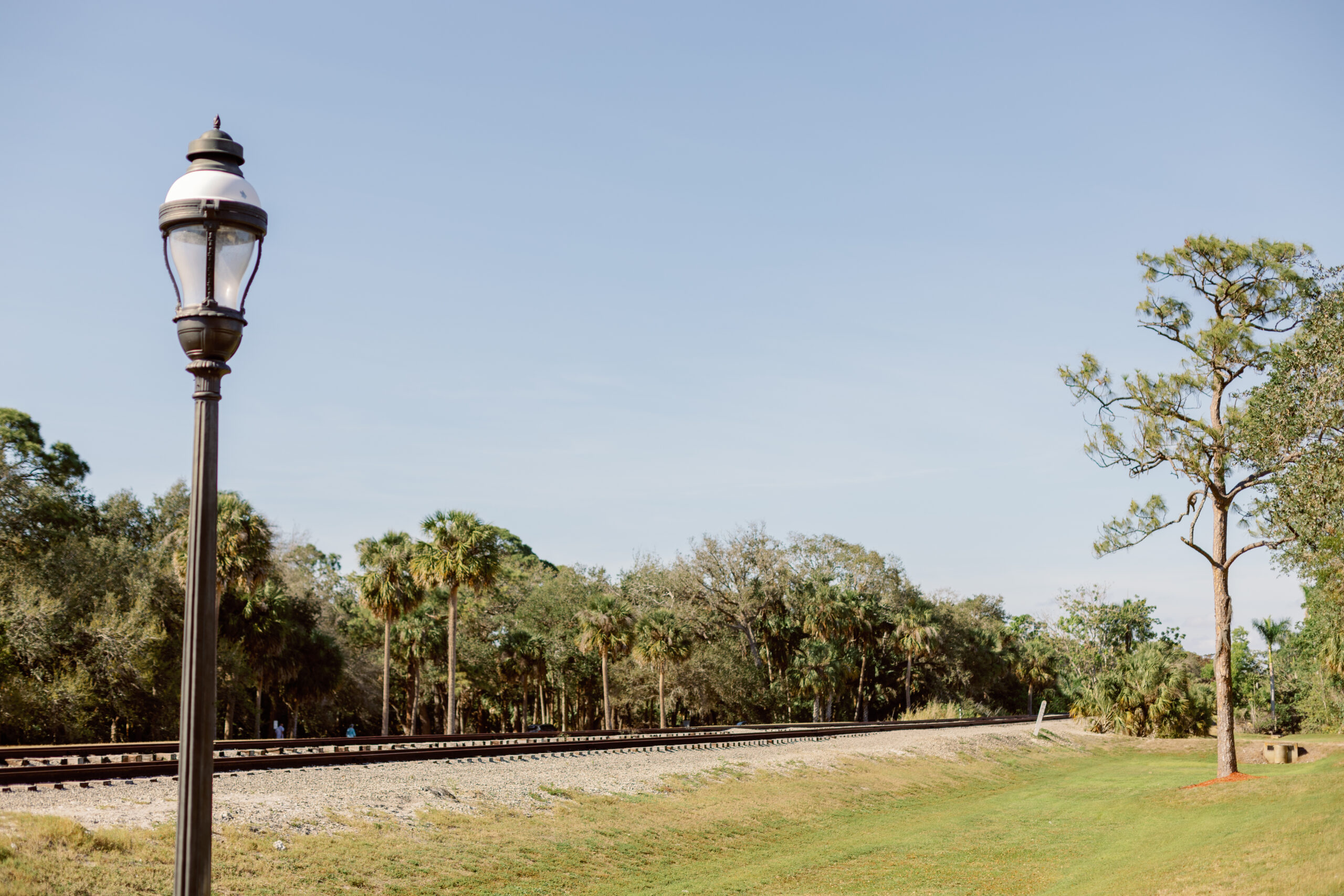The Bonita Estero Rail Trail project could transform a 12-mile portion of the Seminole Gulf Railway into a recreational biking trail stretching from northern Collier County to Alico Road in Lee County. Friends of the Bonita Estero Rail Trail, in partnership with nonprofit Trust for Public Land, continue to push for the project.
The concept of acquiring the Seminole Gulf-owned rail—which has been unused for about 15 years and runs through Bonita Springs and Estero—and transforming it into a public trail has gained attention in the community since Friends of the Bonita Estero Rail Trail was established in September. The group now has more than 2,000 members.
“Our goal is to have over 5,000 members by the end of the year, and we certainly are on track to do that,” says Deb Orton, president and co-founder.
The trail would become part of the statewide Shared-Use Nonmotorized Trail Program as part of the southwest corridor. The Metropolitan Planning Organization is completing a feasibility study, which was slated to be finished and presented in March, to receive funding from the state.
In Florida alone, there are more than 65 rail-to-trail projects, the first being the St. Mark’s Trail completed in 1988 in Tallahassee. The nearest completed project to Lee County is the Legacy Trail in Sarasota County, which opened last year to the public.
Project Manager Ned Baier with Volkert Engineering said the Legacy Trail is a good example of what can be accomplished in Lee County, as Sarasota County had to buy abandoned rail lines from Seminole Gulf to build its almost 20-mile trail. “[The Legacy Trail] has kind of been the prototype for us to follow, and is kind of the vision we have for this project,” he says.
If the rail is successfully acquired from Seminole Gulf and the state grants funding for the SUN Trail Program, that money would cover design and capital construction costs. However, each municipality involved would be responsible for maintenance, landscaping and amenity costs.
“Longer term, it makes some sense to have Lee County as the operator and maintainer of the trail because, ultimately, this will be a countywide project, but we don’t know when that’s going to happen,” says Metropolitan Planning Organization Director Don Scott. 
The agency is confident the project will qualify for state funding, considering it was successful in receiving grants for similar projects, such as the John Yarbrough Linear Park and the $7 million overpass over Colonial Boulevard in Fort Myers. “The MPO has been very aggressive, supportive, and I’m sure they would have success in this project,” Baier says.
Friends of the Bonita Estero Rail Trail have successfully obtained endorsements from homeowner association communities in the area including Pelican Landing, Pelican Sound and Riverwoods Plantation. However, residents of The Vines community in Estero are reluctant to support trail plans because the design involves bisecting their gated community.
Although there are a lot of unanswered questions, Village of Estero Vice Mayor Jon McLain said there are some real advantages to purchasing the rail trail corridor. “I will give 100% to make sure that this is serving all the folks in Estero and not disadvantaging others,” McLain said.
While local cyclists have been advocating for it, the project also caught the attention of St. Louis-based law firm Lewis Rice. It prompted two of the firm’s attorneys to host public information meetings in Estero for landowners adjacent to the former railroad right-of-way.
Attorney Lindsay Brinton sought to inform landowners about the railroad conversion and explain their rights to compensation once the conversion begins.
“We anticipate that once the deal is done and the terms are negotiated that they will have to seek federal approval,” Brinton says. “They will then seek federal approval through [The National Trails System Act], and the Trails Act will then allow them the authority to sell this line to the trail group.”
The law grants the federal government authority to turn abandoned railroad rights-of-way into a nationwide system of recreational trails, but not without compensation to adjacent landowners.
Brinton said federal law will come into play and preempt state law property rights, entitling landowners to compensation. “There are about 300 landowners along this 12-mile strip of railroad right-of-way. So anyone who holds land under this right-of-way that acquired its property before the date of taking, which has not yet occurred, is eligible to make a claim for compensation,” she says.
With many steps still needed before a design is agreed upon, it is expected this project will take five years to complete if progress continues with Seminole Gulf.





